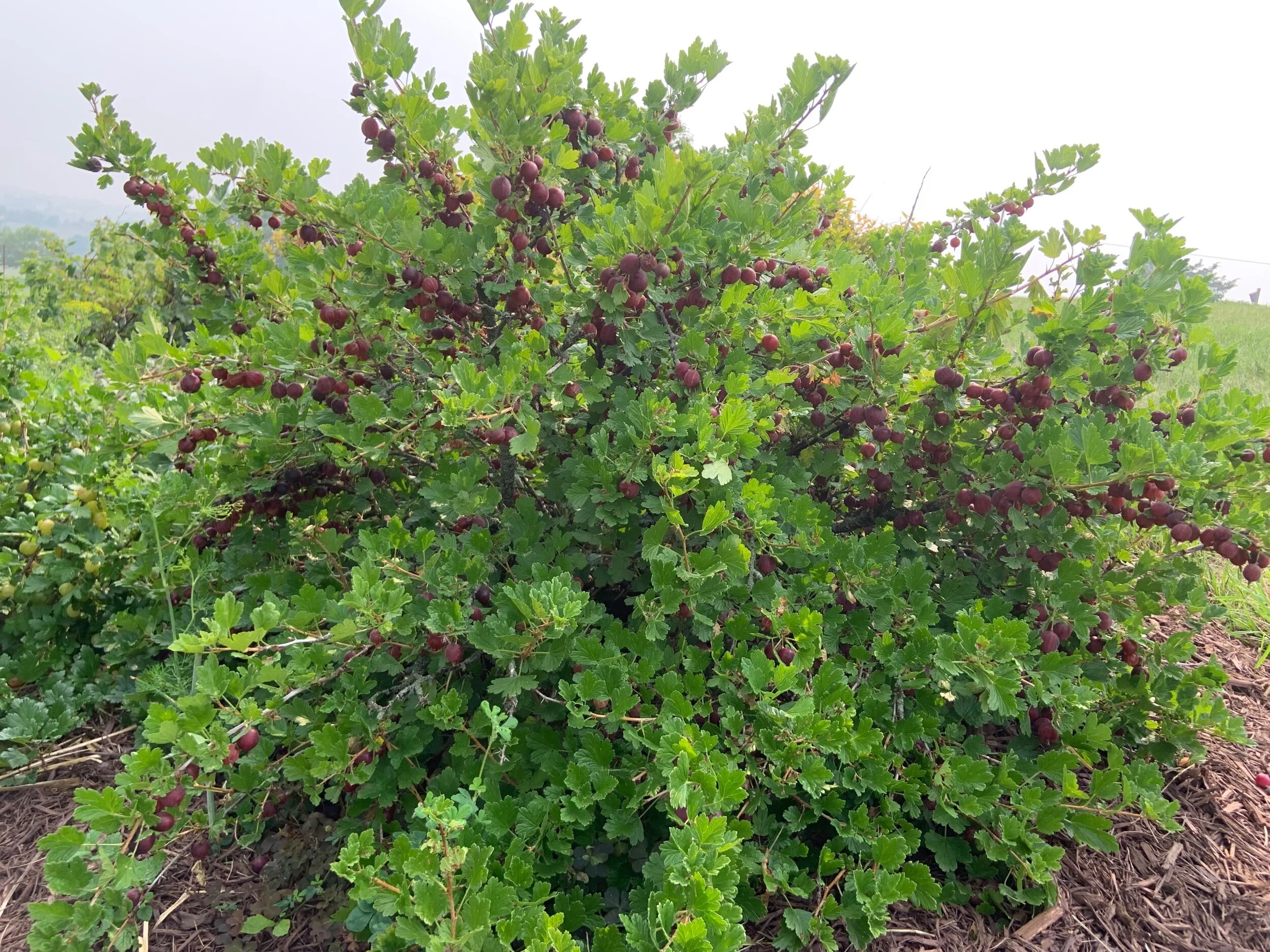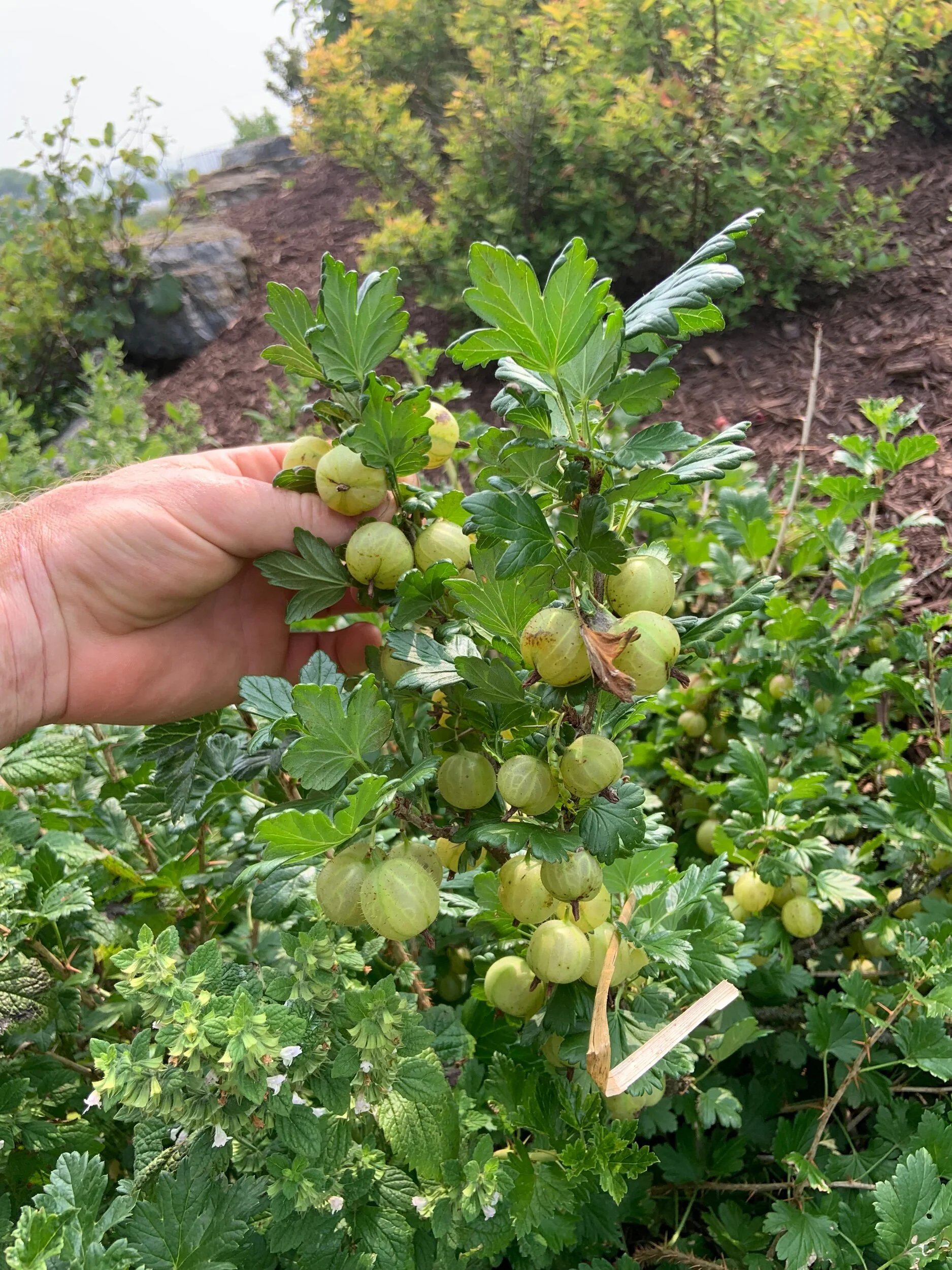Gooseberry






Gooseberry
Ribes spp.
Plant for the nutritious sour, for the prickly branch necks, and for the old joke!
Hardy from Zones 3-8. 3-5 feet tall and wide. Self-fertile.
Gooseberry is a thorny relative of Currant, with larger fruit clustered along their spiny stems. Some varieties are native to Europe and northern Africa, found in highland thickets and copses, but they’re becoming naturalized in parts of North America, an ecological lesson for those of us descending from settlers and colonists. Most Gooseberries are hit hard by American Gooseberry mildew, so cultivated varieties are crossed with Ribes hirtellum, the native Goose of this continent.
The green fruit, sometimes spotted with yellow and white and sometimes entirely red or purple or black, range in taste from sour to sweet, excellent for pies and desserts, or flavoring water and cordial. The fruit is high in Vitamin C. We mostly eat them fresh, but turn some into jam.
The name might be a twist on Dutch or German words for “curled” or “crisped,” though it might just be because the curled stems look like a gooseneck. In Britain, where they’ve been extensively cultivated, they’re called goosegogs. Gooseberry bush was also once slang term for pubic hair; as the old saying goes, “Babies are born under a gooseberry bush.”
We grow three cultivars of Goose:
Hinnomaki Red (Ribes uva-crispa ‘Hinnomaki Red’): a wonderful Finnish variety with tart skin but sweet pulp. Bred for high yields and mildew resistance. Grows fairly upright but has long skinny thorns, so watch your fingers!
Invicta (Ribes grossularia ‘Invicta’): incredibly popular and amazingly tasty high-yielding variety with big green fruit in July. Bred in England in the 1960s, and won some horticultural awards. Grows and spreads vigorously in well-drained soil, with mildew resistance and frost tolerance.
Jahns Prairie Red (Ribes oxyacanthoides 'Jahns Prairie'): Dr. Otto Jahn selected this cultivar from native Gooseberries up in Alberta, Canada. The fruit is reddish-pink by midsummer and sweet for a good dessert berry. Good disease resistance, including powdery mildew. Edible Landscaping says they haven’t seen White Pine Blister Rust on these plants. Smaller thorns than Hinnomaki Red.
We propagate our Goose from cuttings and tip-layering. Our plants grow in forest gardens and walkway edges where they get plenty of light and some afternoon shade.